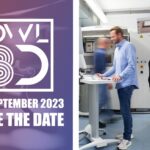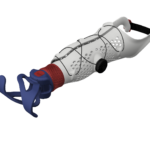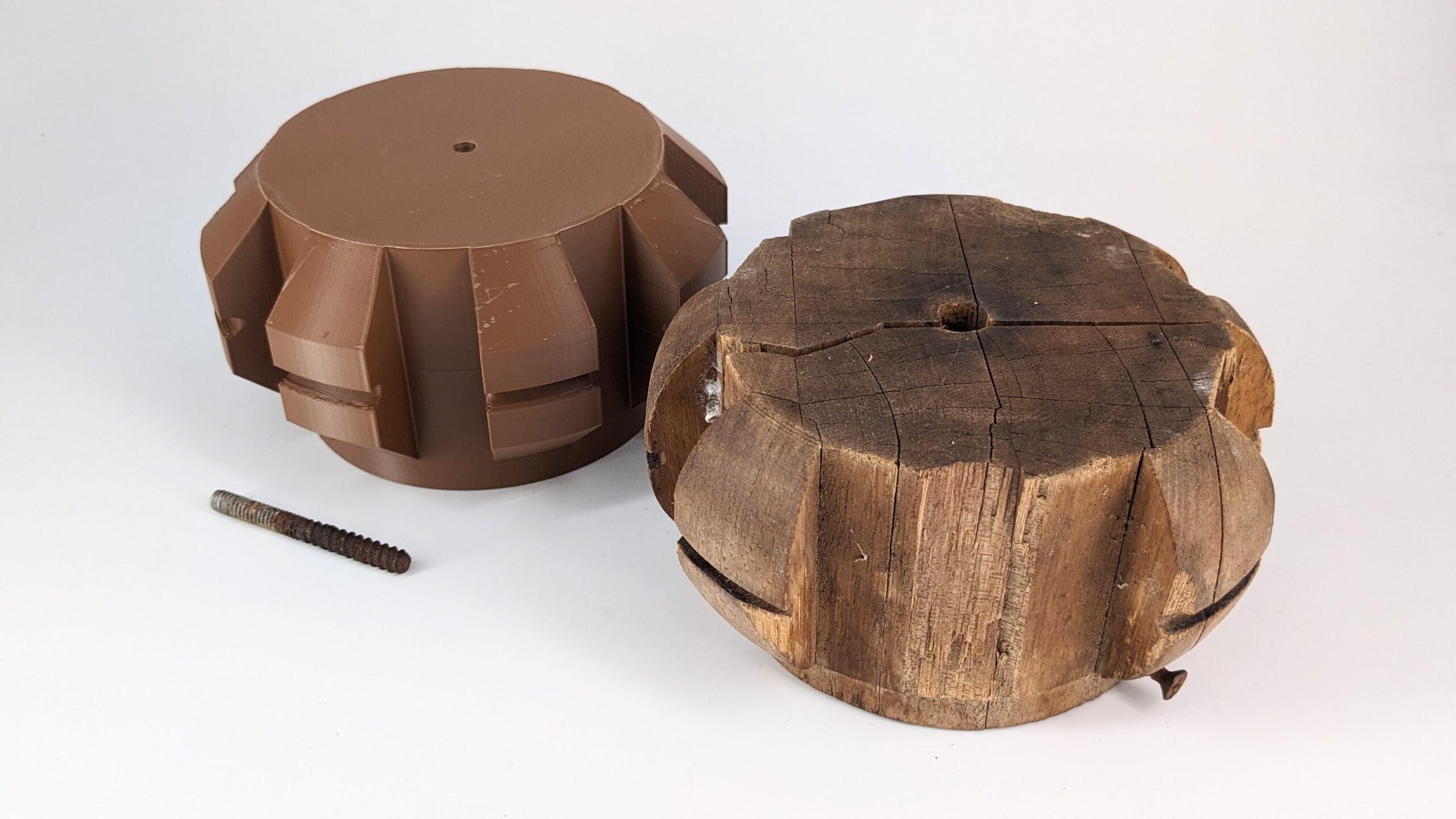
Spot the Difference! Summertime Spare Parts
- Matthias Habdank
- August 18, 2023
- News, Opinion
- 3d printing, additive manufacturing, automated workflows, digital inventory, digital twins, digital warehouse, inventory management, spare parts, traceability
- 0 Comments
Extending Product Lifetimes through 3D Printing

While 3D printed parts are becoming ever more glamorous and advanced – additively manufactured parts can now be found in everything from aeroplanes to fashion garments – sometimes it’s nice to take a step back, and consider some more everyday applications of the technology.
The wooden runner hub part below supports the ribs of an outdoor parasol, which, after 30 years of German summers, unfortunately degraded; with no replacement part available, the parasol was destined for scrap. However, armed with CAD software and a simple desktop 3D printer, the parasol was restored to working condition. Check it out!

First, the original component’s measurements were recorded, and in some cases estimated for the sections which had worn away. A digital twin of the part was then created in a CAD software and printed using a Fused Deposition Modelling (FDM) printer. The resulting part was a fully functioning, plastic replica of the original – even the same screw could be used for connect the runner hub to the pole.
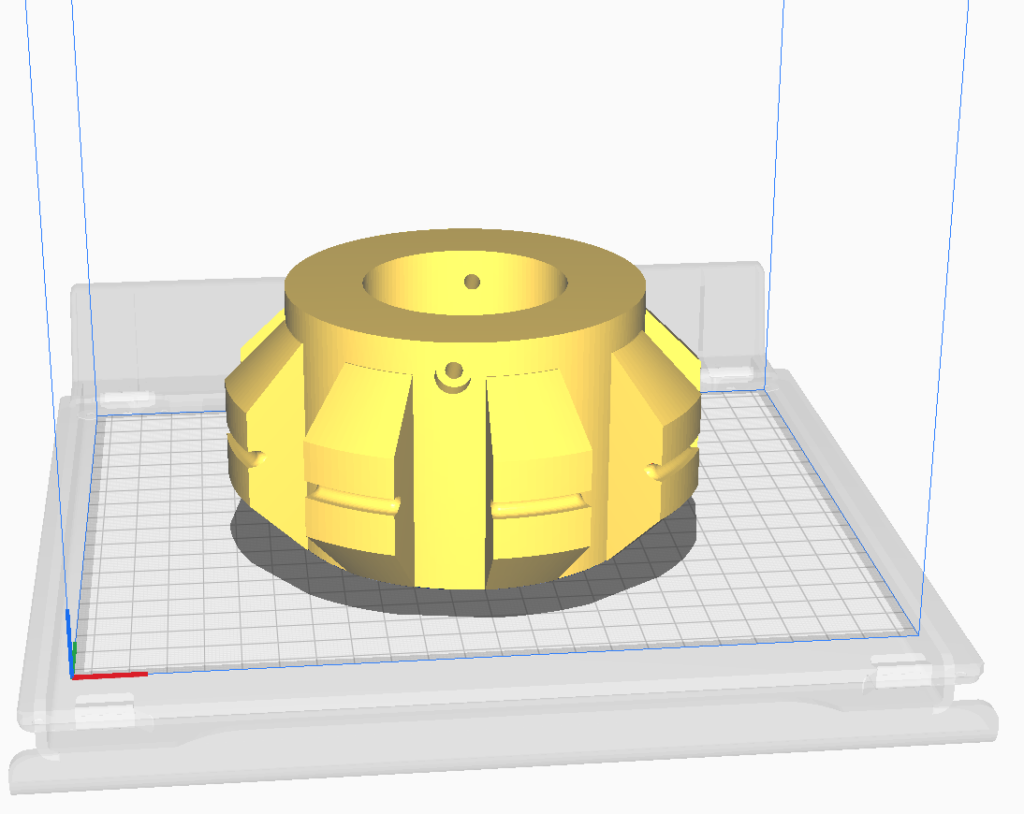
So, what did we learn from our mini-project?
- Product lifetimes can be easily extended when spare parts are available on-demand.
- With 3D printing, spare part production is economically viable, even at low production volumes.
- Overall lead-time from design through to production is competitive against traditional manufacturing methods for customised items.
- Sustainability is an indirect advantage of 3D printing – material wastage, excessive emissions and unnecessary processing steps are avoided in this workflow. Although plastic has its ecological disadvantages, in this case it provides a more durable alternative to wood, extending the overall product’s lifespan.
How could we add even more value…?
If multiple runners in this product line were found to have degraded, it would be great if the same part could be re-ordered on demand, to the same parameters… which is possible via connectivity to a digital warehouse and shop system.
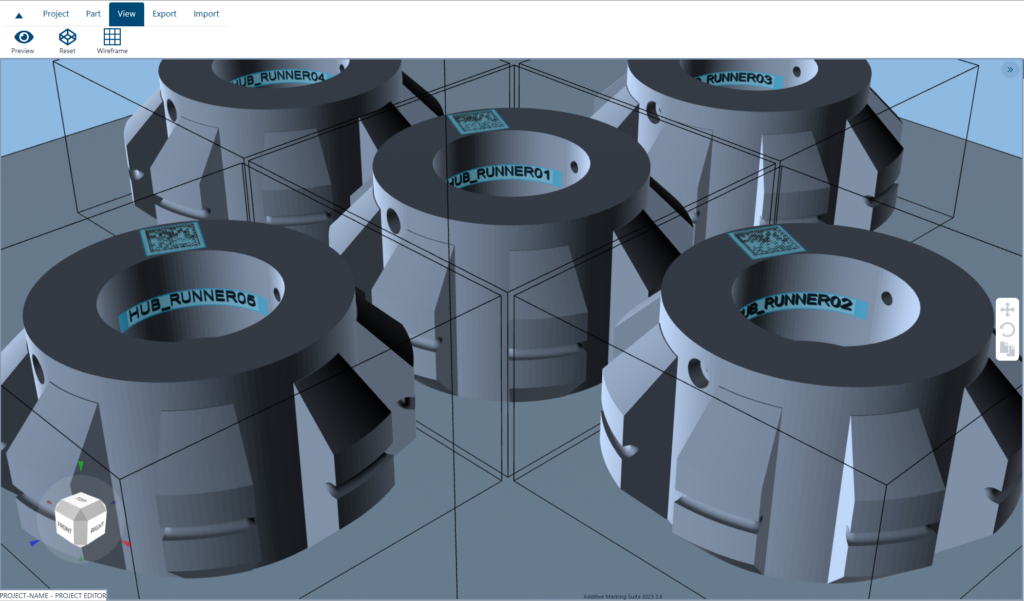
A first step would be to mark the parts with a unique identifier – in the form of a datamatrix code – which can then be used to connect to a webshop or similar digital database.
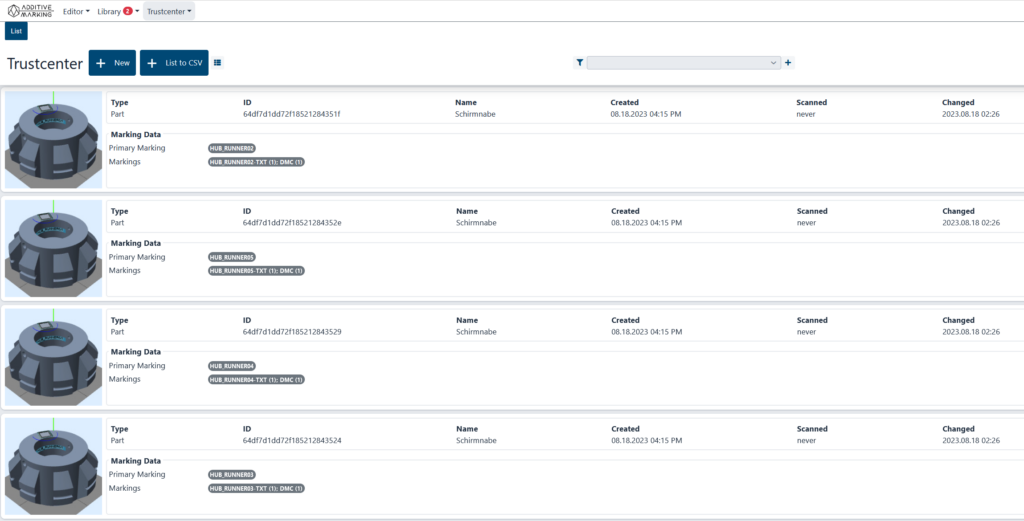
From here, new parts can be instantly reordered, on-demand. No need for physical inventory storage or lengthy lead times to replenish stock!
While our runner hub was a one off print this time, digital inventory of this part, and those similar, can be easily enabled and optimised through direct part markings.
Read about our other traceability case studies here!


